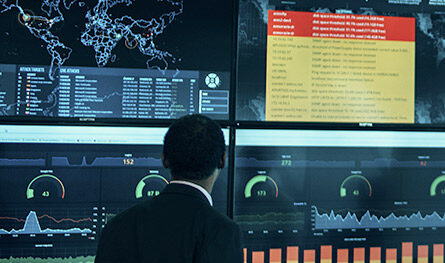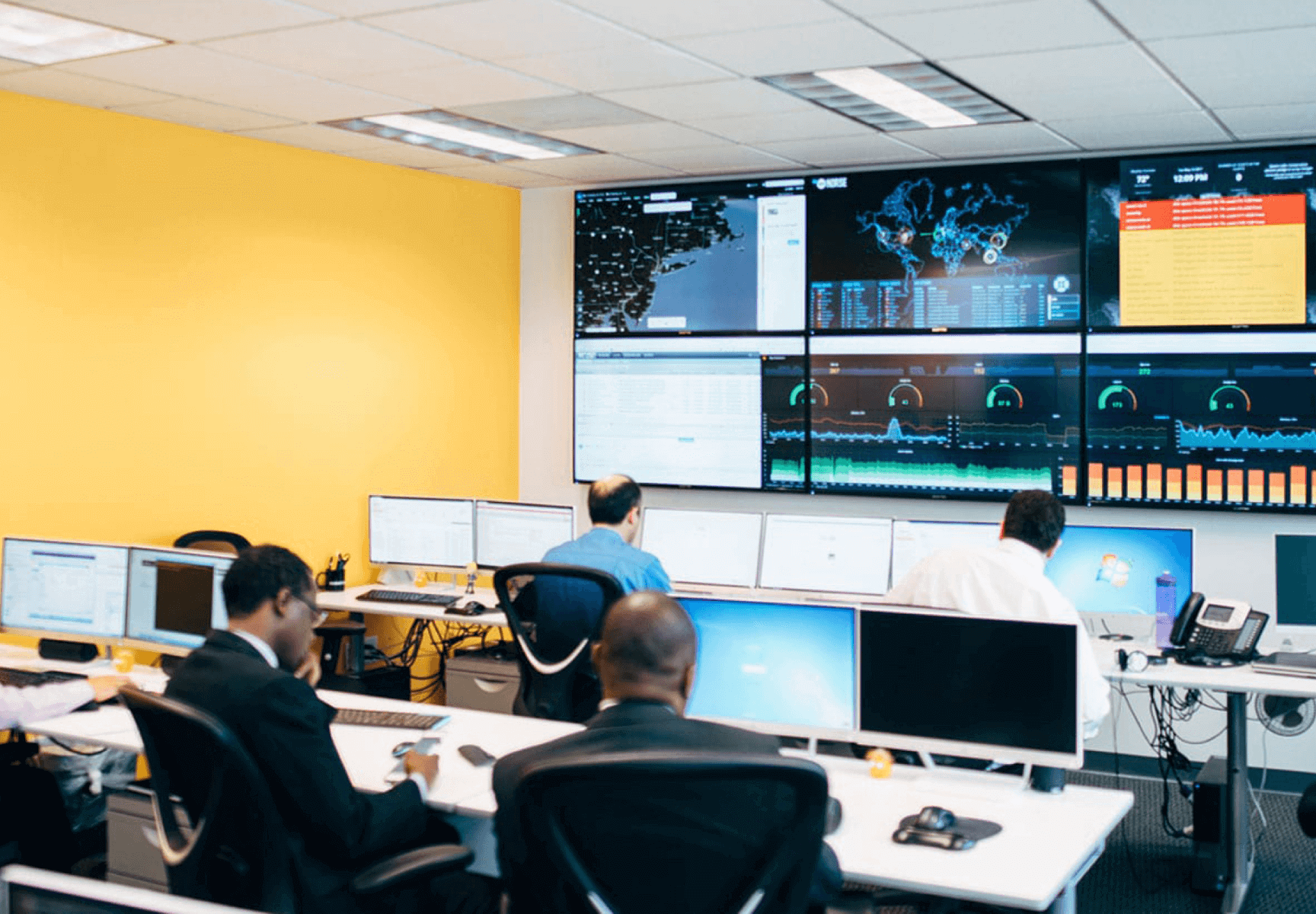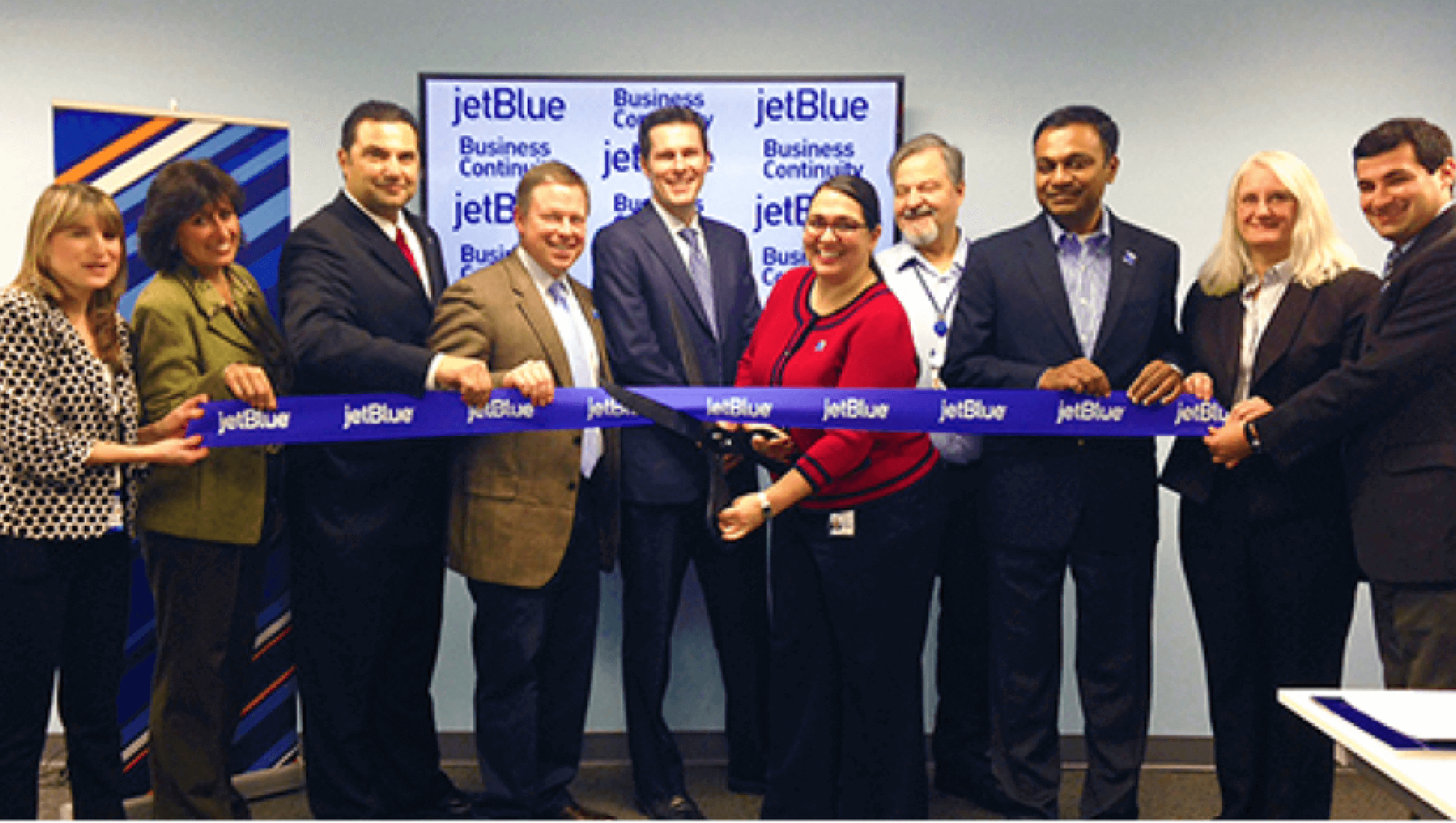Continuity Centers


The hackers want to take everything out at once—the customer’s data centers and their backups—immutability provides another line of defense. That’s where Backblaze comes into play.
Gregory Tellone, CEO, Continuity Centers
With ransomware on the rise, Continuity Centers, a business continuity and disaster recovery as a service (DRaaS) provider, wanted to offer customers added security without increasing prices. Determined to implement immutability in 2020, they selected Veeam backup software for its robust recovery support. They just needed a compatible storage solution for data retention.
Resolved to build storage themselves, they were ready to order equipment when Backblaze announced support for immutability with Veeam. Just days later, after getting configured in under an hour, they were sending customer backup data to Backblaze B2 Cloud Storage, flagged with immutability as a formidable line of defense in the event of a ransomware attack.
Rather than building on-premises infrastructure, Continuity Centers avoided a substantial capital expense by using Backblaze B2. With Backblaze’s pricing model, Continuity Centers can offer enhanced customer data protection at no extra cost. And with immutability, data is so well-protected in Backblaze B2, even Continuity Centers can’t delete it—a word of caution they give to customers with confidence.

Continuity Centers is a New York area-based managed service provider (MSP) specializing in business continuity and disaster recovery. Focused on resiliency for their 150+ customers, they have a 21-year track record of successful recoveries during outages, disasters, and security incidents. Their engineers specialize in building and maintaining strong infrastructures to increase customer productivity and reduce downtime.

Scrolling through his Facebook feed, Greg Tellone, CEO of Continuity Centers, saw the kind of “cry for help” post that demands a response. “At work. It’s been 48 hours, and I haven’t slept,” it read. Tellone immediately picked up the phone.
“We had everything backed up. We were careful. They wiped out all the backups. They encrypted everything,” his friend despaired. The ransomware attack was catastrophic. After paying a six-figure sum, recovery took weeks due to faulty encryption keys and hacker code errors. Some data was lost forever.
Seeing first hand the loss and damage to his friend’s business, ego, and career hit home with Tellone. The friend thought he was doing everything right, as most engineers do, but didn’t have the budget, time, or expertise to properly build a backup solution that offered real-world protection. After the attack, Continuity Centers gained a loyal new customer.
Continuity Centers uniquely focuses on business continuity—providing workgroup recovery office space worldwide and creating systems of prevention and recovery to deal with potential threats—and DRaaS, including providing a service-level agreement for a recovery time objective (RTO), an option that most backup companies are not in a position to offer. They're not just responsible for restoring data, but also getting their customers back up and running within an agreed upon RTO, as fast as one hour.
With customers relying on his company, Tellone makes it his business to stay one step ahead of cybercrime. “When we say ‘hacker,’ it’s not some kid in his basement,” he explained. “They’re stealthy, professional crime organizations. They attack slowly and methodically. They can monitor your network for months, until they have the keys to the kingdom—including backups—then they pull the trigger. That’s the battle we’re up against.”
And it’s only getting worse. Cybersecurity Ventures predicts ransomware attacks will happen every 11 seconds by the end of 2021. Indeed, between September 2019 and March 2020, Continuity Centers helped four customers recover from ransomware. At the time, these customers only utilized Continuity Centers’ disaster recovery services, not their managed IT services or security information and event management (SIEM), meaning Continuity Centers had no visibility into the customers’ security or networks. Unable to foresee the attacks, Continuity Centers fielded frantic, middle-of-the-night calls desperate for help. Fortunately, Continuity Centers deploys a level of protection such that they were able to recover all four customers, but Tellone knew they had to keep improving.
Recognizing the threats at hand, Continuity Centers made a push in 2020 to add even more security against ransomware.


When we say ‘hacker,’ it’s not some kid in his basement,” he explained. “They’re stealthy, professional crime organizations. They attack slowly and methodically. They can monitor your network for months, until they have the keys to the kingdom—including backups—then they pull the trigger.
Gregory Tellone, CEO, Continuity Centers
The system Continuity Centers used to that point—Arcserve software, where Tellone worked in the early ’90s, to manage customer backups coupled with on-premises storage and off-site backups spread across multiple data centers—supported their 100% success rate. However, as a self-professed “recovering geek,” Tellone keeps a keen eye on the backup software market, watching for emerging leaders and investing in new software providers based on evolving needs. Being vendor-agnostic, Tellone supports his customers by focusing on their business outcomes rather than selling a specific vendor.
As the first step in the push for better protection, Tellone moved from Arcserve to Veeam, a company he’d watched over the years to see if they were up to the task. In February of 2020, they passed muster. “We looked at how our recoveries went, and how we could continue to improve upon them. That was a big reason for choosing Veeam—it has a higher focus on data security and is much faster at recovery,” Tellone said. “Anyone using any backup software can do backups, but providing protection of those backups and how quickly you can recover your data and systems is the true test of a product today,” he concluded.
With features like SureBackup, Instant VM Recovery, and, crucially, immutability, Veeam offered the protection he sought. When a customer sends their backups to a Veeam Cloud Connect service provider who makes security of their customer’s data their top priority, immutability combined with off-site Cloud Connect backup creates a virtual air gap similar to a physical air gap, but without the need for separate physical infrastructure like tape—it all happens in the cloud. Veeam accomplishes this using Object Lock functionality. With Object Lock, customers can store objects using a Write Once, Read Many (WORM) model, meaning data cannot be modified after it’s written. It was a must-have.
To achieve immutability, Tellone needed a storage solution that could support it. He started evaluating his options.
“We’ve always built our own on-premises solutions,” Tellone said. Still, he put cloud providers like AWS and Backblaze B2 on his shortlist to see if they were viable.
Tellone had long appreciated Backblaze’s hard drive reliability reports, so the name recognition earned his consideration. He investigated AWS, but the pricing didn’t fit Continuity Centers’ model. While comparing cloud storage providers, he also began planning a significant capital investment to build out on-premises storage.
That was until Backblaze announced immutability support for object-level protection with Veeam. “We weren’t sold on AWS because of their pricing. We weren’t really sold on anyone else because that one feature was missing—immutability. The immutability support from Backblaze made the decision easy—they were already on the shortlist, and the pricing was great,” he affirmed. After that, Tellone closed the book on his evaluation and reached out to Backblaze to form a partnership.
Veeam enabled Continuity Centers to place an additional backup copy of all of their customer’s backups directly into the Backblaze Storage Cloud, with no middleware required. With Veeam integration and Backblaze’s ease of use, the implementation took Tellone and his team less than an hour.
Following instructions from Backblaze’s Knowledge Base, Tellone avoided the personnel expense it would take to build the infrastructure themselves. “A lot of time and energy from expensive engineers would go into building our own environment. The simplicity of implementing Backblaze was a huge benefit,” he confirmed. “We could have completed it in 10 minutes, but it was my first time, so I triple checked and checked again.”
Continuity Centers deploys a robust security hardened Linux appliance at each customer, which provides the first line of immutable backups. They then employ high-end storage area networks within their data centers as their immutable Performance Tier. This high-performance tier enables them to respond rapidly in case of emergency. “When a customer has a disaster, we can quickly spin up their servers on their local appliance or within our data centers, all purpose-built to keep their network running at production speeds,” he noted.
As soon as a customer’s backup is sent to the Continuity Centers data centers, an additional copy is immediately sent to Backblaze B2 and flagged for immutability per the customer’s retention requirements, allowing them to guarantee the data’s security as well providing an additional backup copy of every customer’s data. When customers reach their retention period for the high-end storage, Continuity Centers moves the data to their internal immutable Capacity Tier. Backblaze B2 and the internal immutable Capacity Tiers store a copy of every customer’s backup for the duration of each of their predefined retention policies.
Tellone considers Backblaze part of his first line of defense, even if it’s the last failsafe in the chain. “The hackers want to take everything out at once—the customer’s data centers and their backups—immutability provides another line of defense. That’s where Backblaze comes into play,” he explained. “Immutability has given us one more level of protection against the hackers. That’s why that was so important to us and most importantly, to our customers.”


We looked at how our recoveries went, and how we could continue to improve upon them. That was a big reason for choosing Veeam—it has a higher focus on data security and is much faster at recovery.
Gregory Tellone, CEO, Continuity Centers
Backblaze’s affordable, pay-as-you-go model means Continuity Centers can implement the protection they want without changing their prices. Tellone elaborated, “I did not want to tell 150 customers we were increasing prices so we could do a better job. I just want to do a better job and give them extra protection. Backblaze allowed us to do exactly that.”
Tellone expected to spend around $500K on infrastructure and $5,000 per month to co-locate and manage the equipment. “We chose Backblaze so we didn’t have to build yet another data center and buy even more equipment. For us, Backblaze is hardware as a service, it’s S3 compatible, and it plugs right into our Veeam platform,” he said. With Backblaze B2’s scalability, Tellone no longer needs to deploy new infrastructure for long-term retention, on an ongoing basis.
Backblaze’s pricing fit his needs, and setup was easy, but immutability support was the true deal closer. “We’ve been letting our clients know that immutability makes your data undeletable. Even we can’t delete it. That’s the level of protection you’re getting,” a claim that gives him confidence in the security of his customers’ important data and his ability to restore their environments no matter the threat.
With ransomware becoming ever more sophisticated, Tellone observed, “The past 12-18 months have been the worst it’s ever been, and I suspect I’ll be saying that every 18 months for the rest of my life. That’s why companies like Backblaze, Veeam, and Continuity Centers work together to defend themselves and their customers against this type of attack.”


We’ve been letting our clients know that immutability makes your data undeletable. Even we can’t delete it. That’s the level of protection you’re getting.
Gregory Tellone, CEO, Continuity Centers

The Backblaze B2 Storage Cloud is purpose-built for ease. It offers always-hot, S3 compatible object storage that supports your workflows via third-party software integrations, APIs, CLI, and web UI. And it’s priced for easy affordability at rates a fraction of other cloud providers. Businesses in more than 175 countries use the platform to host content, build and run applications, manage media, back up and archive data, and protect and recover from ransomware.